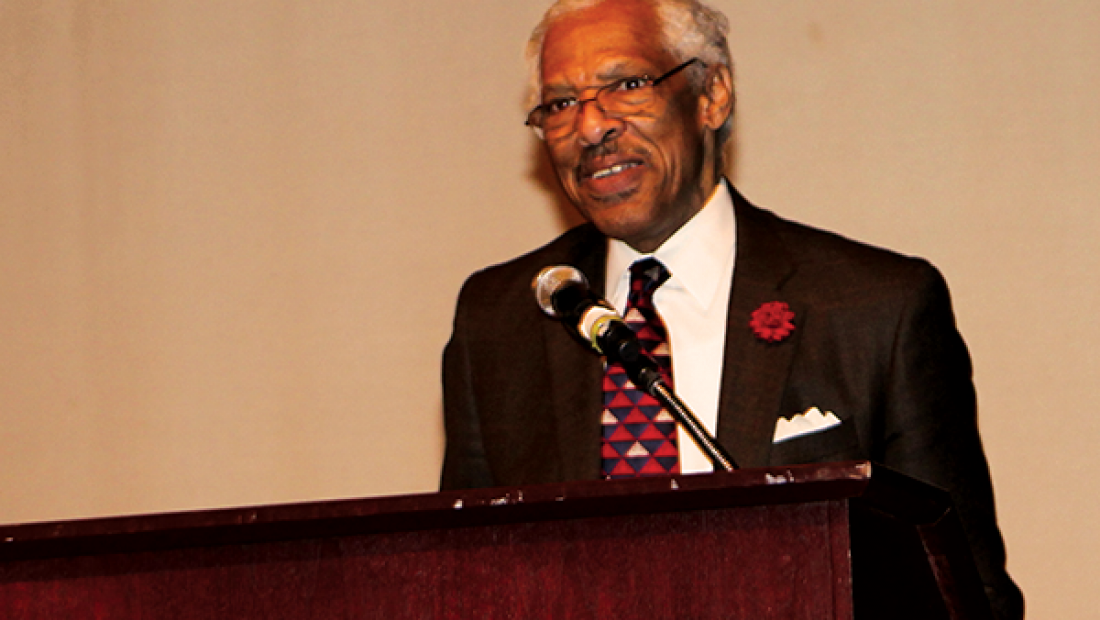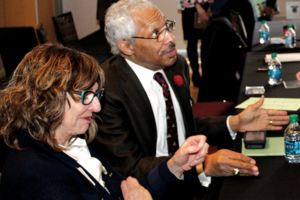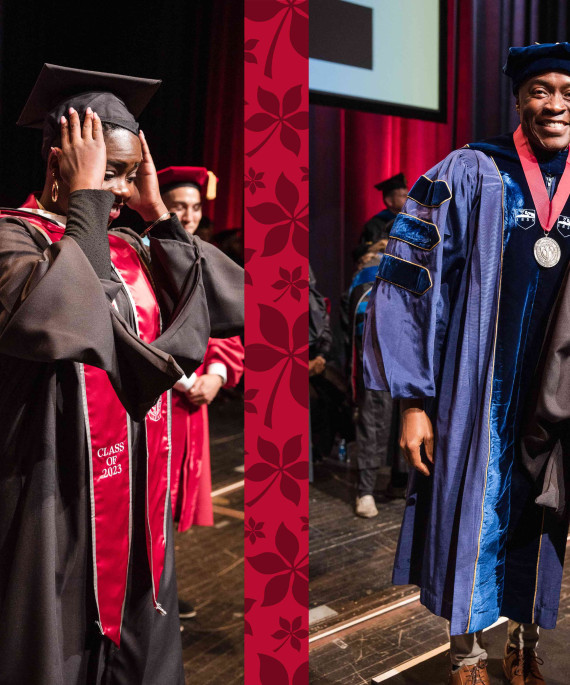
EHE alumnus focuses on importance of black colleges
The nation’s historically black colleges and universities are serving a need to educate the black community that must continue to be met, said alumnus Leonard L. Haynes III, a senior director at the U.S. Department of Education’s Office of Postsecondary Education.
Haynes ('75 PhD Educational Leadership) delivered the 15th annual Lena C. Bailey Lecture on Leadership at the Ohio Union on Feb. 11, 2015. The lecture was created to recognize the leadership Bailey provided during her 31-year career as an administrator at Ohio State, including the first dean of the College of Human Ecology.
As a leader in the education of minority students, Haynes has served several roles in federal government to improve postsecondary education. He was a faculty member at Southern University, Howard University and George Washington University where he taught history and public policy. He also is a published expert on issues related to equity and parity for minorities and their education.
“Black colleges are responsible for raising the black middle class,” he said. “They are only 3 percent of all colleges, but educate 10 percent of all black students and award degrees to more than 20 percent of all black graduates.”
Meeting a need for 150 years
These colleges serve a need to educate black men and women, helping them escape poverty, Haynes said.
Students at historically black colleges and universities often come from low-income families and are eligible for Pell grants from the federal government. Sixty percent of freshman who attend these historical universities are the first in their families to go to any college, Haynes said.
Some HBCUs have been educating students for more than 150 years. The one thing they all have in common is historically black colleges and universities are institutions established before 1964 with the intention of serving the black community.
There are 106 historically black colleges and universities in the United States, both public and private, including: Howard University, Tuskegee University, Grambling State University and Morehouse College.
Ohio has two – Wilberforce University and Central State University, both located about 20 miles east of Dayton, Ohio. Wilberforce opened in 1856 and is one of only three universities established for black students prior to the American Civil War. Central State was established in 1890.
Making the case for increased HBCU support
 Leonard L. Haynes, left, chats with guests prior to his Feb. 11 lecture in Columbus on historically black colleges and universities. Dean Cheryl Achterberg listens to his comments.
Leonard L. Haynes, left, chats with guests prior to his Feb. 11 lecture in Columbus on historically black colleges and universities. Dean Cheryl Achterberg listens to his comments.
Haynes’ call to keep historically black colleges and universities relevant comes at a time when many of their futures are in doubt.
Several are struggling with years of declining enrollment and financial hardships. State budgets are cutting funding to the schools. And others, such as Wilberforce, are threatened with closure because of growing debt.
“There has hardly been any advocacy for the black colleges,” Haynes said. “What if they had what they needed to work with? Where would they be today?”
Only 46 black colleges received research funding in 2013 totaling $517 million, according to the National Science Foundation. The University of Washington and 34 other universities receive more research dollars individually than all of the historically black colleges and universities combined.
But with what they do have, historically black colleges and universities have been able to create academic programs that have trained doctors, lawyers, engineers, veterinarians and military service men and women.
Students and researchers at these institutions are developing cancer vaccines, winning multi-million dollar grants to attract the next generation of bio-medical professionals and achieving higher scores on bar exams than the state average.
“They could do so much if they had access to the resources to make it happen,” Haynes said.
He stressed that historically black colleges and universities need to make their cases about why they are important and need to exist – to the government, donors and students.
“I know if they didn’t exist, there would be a need to have them today,” Haynes said. “Black colleges matter. It is in our collective priority to have more educated people.”




